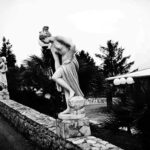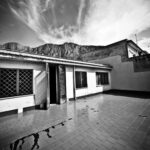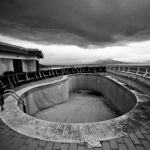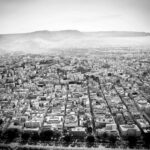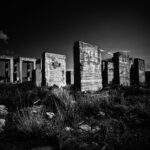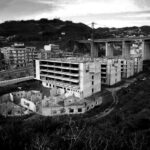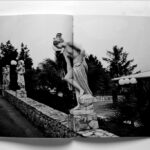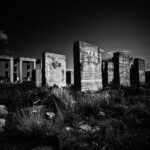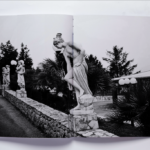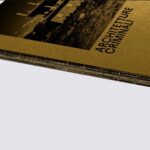
Criminal Architectures
How crime shapes lives and landscapes
Criminal Architectures is a book by Adelaide Di Nunzio.
Preface by Petra Reski, a German journalist and author who has written extensively on organized crime.
Photography and essays by Adelaide di Nunzio
Photo editing by Marialuisa Plassmann
Text Editing by Diego Nuzzo and Fatima Raja
Afterword by Antonio Vesco, an editor of the magazine Il lavoro culturale, and member of the Laboratory of Analysis and Research on Organized Crime at the University of Turin (Larco).
Criminal Architectures examines, in images, how crime has influenced architecture, disfigured the landscape and substantially modified aspects of people’s lives. Through Adelaide Di Nunzio’s strong and decisive visual language, the project reflects on this influence, showing how structures and faces represent two sides of the same coin.

Criminal Architectures zooms in on four regions of Southern Italy: Campania with the villas and pools of the houses of the Camorra; the great Calabria, dominated by unfinished public and private buildings; Puglia with a myriad of abandoned factories and finally Sicily, with hundreds of mafia buildings confiscated by the state authorities.
Criminal Architectures is also a book about the people who have suffered the effects of crime on their lives. Along with the architecture and landscapes of the region, this is a book of the faces of Southern Italy; faces which tell the same story, evoking an atmosphere of anger and abandonment. Like landscapes, people are also destined for an eternal “unfinished”.
These are people who have changed paths after coming in contact with organized crime and the underworld. Their lives have been influenced by the dynamics of crime, creating mixed feelings within them, and drastic changes in their lives. Fear, pain, strength, loss: a multitude of feelings arise when crime intertwines with people’s lives—sometimes completely at random.
These feelings result from a clash between executioner and victim; they are the memory of something that wants to be obscured; to testify and renounce their freedom; to live in solitude, in fear, and sometimes in the depths of poverty.
Di Nunzio’s photography explores the short circuit of the eternal “unfinished”: the hotels, luxury restaurants and infrastructures that were interrupted because they can be traced back to crime, lying on the ground like skeletons of concrete and steel.
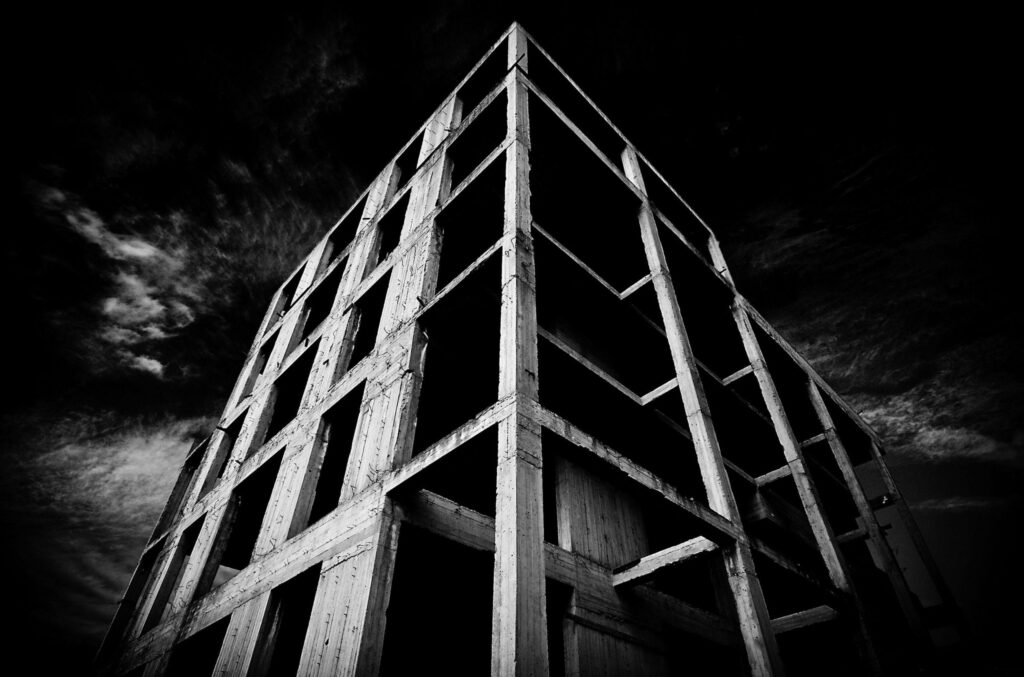
Ruins of past glory, of seized power, of bare marble and desolate staircases, abandoned terraces with empty swimming pools inhabited by grimy waterlilies. These are the Italian archaeological and architectural landscapes that recall solitary Parthenons and contemporary totems, mute testimony of something cursed that has been and that is no more.
Many of the structures purchased with dirty money, or constructed to launder illicit money, still remain. Undoubtedly, much of Italy welcomes “mafia-style” architectural constructions: from illegal building to “unfinished” structures, characterized by a particular aesthetic, with well-defined symbols, shapes and decorations.
In Italy, especially in the south, a particular taste developed, which we can call “sacred-kitsch”. This is a well-defined reality for the people here, a style that expresses an imaginary that influences their whole world, from architecture to furniture, from fashion to food. From the chocolate waterfall, with fireworks, atop a wedding cake, to the horse-drawn carriages marking triumphant celebrations, to advertising posters put up to wish someone a happy birthday. The famous villa in Scarface, starring Al Pacino, inspired the home of a Camorra boss known as Sandokan.
The style conforms to modernity. It mixes genres: the neoclassical, evoking the power and glory of emperors, and the baroque, exalting gilded, light, rounded shapes. But it is constructed of poor-quality materials: chalk or ceramic coated with sprayed-on gilt; enamelled plastic. The animal sculptures at the entrances are well-known, as are the thrones in the living room, zebra-striped and leopard-spotted tapestries, an expression of wealth.
The marble from Brazil or other faraway places, colored slabs with luminescent veins encrusting living spaces. Curved Victorian staircases, connecting floors with balconies, forming triumphant semi-circular entrances.Buildings with 360° views, porthole windows on the top floors evoking ships. Swimming pools everywhere: on terraces and gardens, shell-shaped tanks to house Venus within an indispensable whirlpool. The expansion of balconies that become terraces with plants and madonnas, lit up in celebration; imperial beds with velvet and gold; stairs twisted into themselves; pastels and fluorescent colors lacking any chromatic logic or respect for the surroundings.
